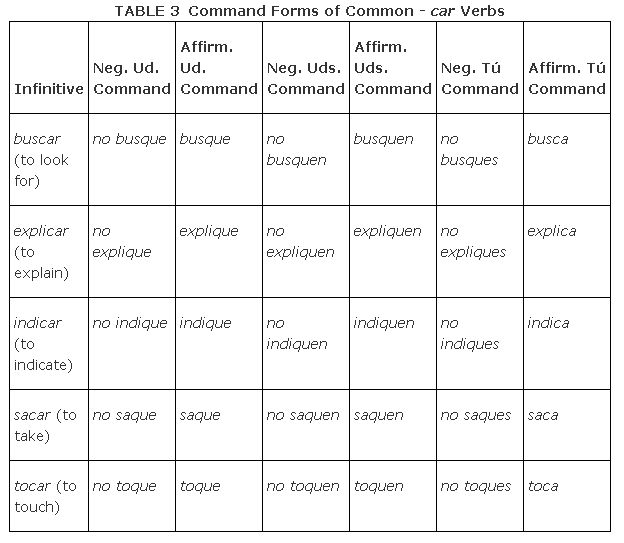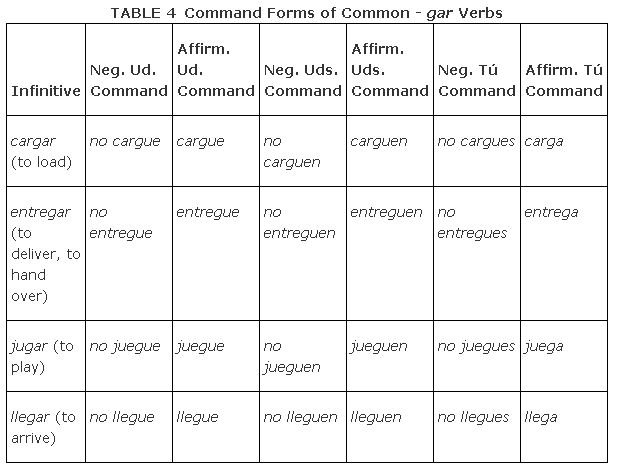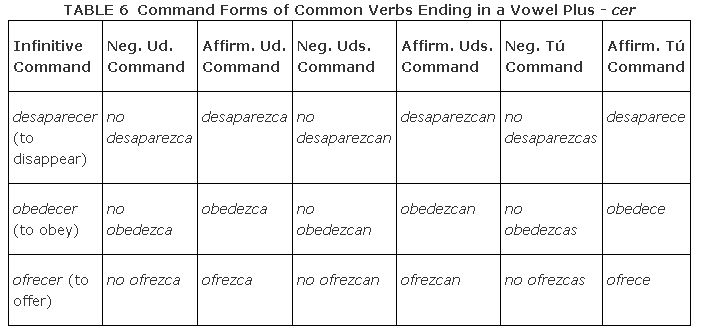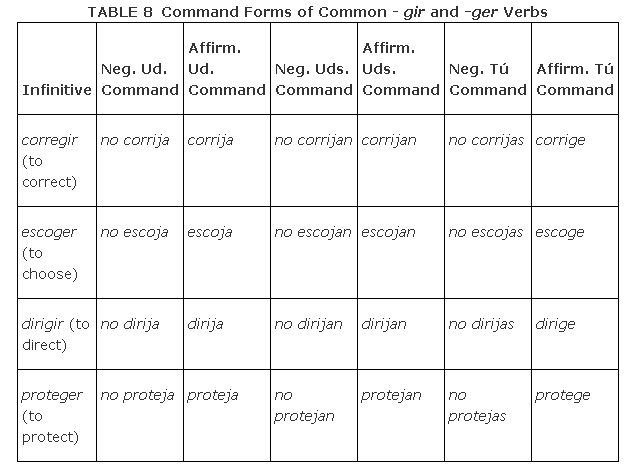All the issues of the present subjunctive are reflected in the command forms. If a verb undergoes a stem change in the present tense, the command form will undergo the same stem change. If a verb undergoes a spelling change in the present tense, the command form will undergo the same spelling change. These kinds of verbs include those that end in ‐go or ‐zco.
Spelling changes
Some common verbs that end in ‐car, ‐gar, or ‐zar change spelling in the subjunctive and, therefore, affect all the command forms except the tú and vosotros affirmative, as demonstrated below.
If a verb ends in ‐car, change the c to qu in all command forms except the tú affirmative. Table offers some sample verbs to help you remember this type of verb.

If a verb ends in ‐gar, change the g to gu in all command forms except the tú affirmative. Look carefully at the sample ‐gar verbs in Table .

If a verb ends in ‐zar, change the z to c in all command forms except the tú affirmative. The command forms of a few verbs are provided in Table .

Verbs that end in a vowel + ‐cer are called ‐zco verbs in the present tense. .

A verb that ends in a consonant + ‐cer or ‐cir has a yo form ending in ‐zo. The command forms for these types of verbs are demonstrated in Table .

A verb that ends in ‐gir reflects the present subjunctive ‐ja endings, as you can see in the examples in Table .

Notice in Table that verbs that end in ‐uir have a y in front of the command endings.

The above rule does not apply to verbs that end in ‐guir (such as seguir), whose yo form ends in ‐go because the u in the infinitive is only present to attain the hard g sound.
In Table , you can see a stem change in all command forms of conseguir (to get). This verb is like seguir and all its prefix verbs. Notice that the u from the infinitive disappears in all command forms except the affirmative tú.
If a verb is really irregular in the present tense subjunctive, the Ud., Uds., and negative tú command forms will reflect the same irregularity. Table is a list of all the truly irregular command forms.

|
|
|
|
|
|
|
|
|
|
|
|
|
|
|
|
|
|
|
|
|
|
|
|
|
|